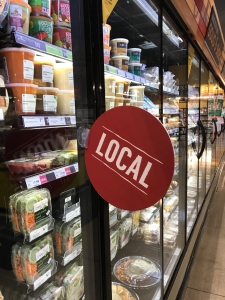
“Local” Signs
These days it’s all about eating local. Many restaurants prepare and advertise “Farm to Fork” food and even grocery stores have labels on the shelves indicating that a certain product is “local”. One well-known health food store even has a sandwich board outside their entrance announcing “We Love Local, The Best From Around here”. But they are certainly not the only grocery store doing this. My questions are; why are the grocery stores promoting local and what does local really mean?
Generally local simply means near you. Yes buying from local farmers does have an impact on the local economy but not much. Primarily, the reason people eat local food is that they believe it’s healthier. This is why I think the grocery stores are advertising that they carry “local” foods.
Two years ago I moved from Sonoma County to the Sierra foothills. It was easy to figure out what was local in Sonoma County since you drove past the farm where you got your veggies at least once a week and occasionally waved to the cows or goats that produced your dairy. Since you could see what was growing it was easy to tell what was local and in season.
However, what is local is not so obvious in a more urban environment. So I did a little online research on the subject and the term “local food” typically means within 100 miles of where you live. In fact, “local” is defined as the ingredients were grown and harvested within that a one hundred mile radius of the store you are standing in. For some more conservative foodies, it also includes the criteria that it grew in an environment that is a match to the one you’re living in. Here in California, for instance, inland areas are typically much hotter and drier than the coast and things like tomatoes can’t be grown on the foggy coast any more than Brussels sprouts thrive in the foothills. So sometimes a little mountain range can make a difference even within the mileage criteria.
When I first moved here I was a little taken aback by these local signs on grocery items and food products from the area I just left. It felt like such a big move to me. Plus, I use to live in a County bordered by the Pacific Ocean and now I live at the beginning of the Sierra Foothills.
That’s when I started forming my questions about “local” and to investigate one of my favorite companies, Traditional Medicinal Teas (TMT). Their teas are made from high quality herbs that are medicinal grade. They use GMC manufacturing practices and operate under stringent quality testing. In addition, they also use Fair Trade with their farmers and produce some very tasty products.
The teas are formulated, tested and packaged in Graton California, which is just 14 miles from my previous address. My current address is now 126 miles from their location. So that is not exactly within the 100-mile radius despite my grocery store’s proclamation. However, the environment is still quite similar. TMT grows everything organically, in environments that areideal for the herb. And that’s the reason they are not local, not even to my previous address. The farms are located in many regions of the world including places as far away as India. None of the herbs are grown in Graton. Traditional Medicinal does not claim to be “local”. They do claim to provide the highest quality herbal teas possible. And I believe they do.
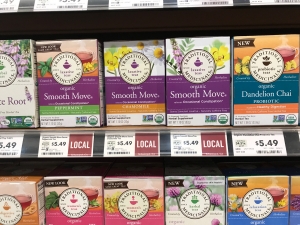
Traditional Medicinal Teas
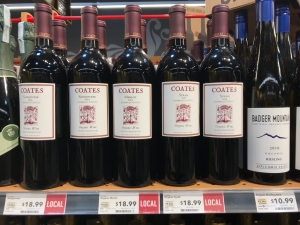
California/Oregon
It’s the grocery stores that are making these claims about teas and all kinds of other products. They just use the companies’ mailing addresses to determine if they are local. But that does not mean that the ingredients were grown or raised locally. And the distance is fairly arbitrary. For instance, wines from Humboldt County California are deemed “local” and wines from Oregon are not. Humboldt is over 200 miles away and has a climate much like southwestern Oregon. Neither location is at all like our dry, hot, local climate.
Another company I like is Strauss Dairy. They process their milk at the 100-mile mark in Petaluma, a climate only slightly cooler and wetter than here. But the cows live on the foggy coast near Marshall. The raw milk is taken by truck to where it is to be pasteurized and made into cream, yogurt etc. Marshall wouldn’t qualify as local to the foothills in mileage or climate.
There are items in the local grocery stores that are indeed “local”. But coupled with this careless practice of using the company headquarters rather than the place where the plants and animals actually live, renders the term “local” meaningless. If eating foods that are from your environment is important to you, then make sure you do a little research on your own.
All the companies I’ve mentioned specifically, produce excellent, high quality products and do not engage in any false claims. But, unfortunately, my “local” grocery stores do. I wouldn’t be surprised if your grocery store is doing likewise. Check it out.
For more information on the subject of local food, check out my previous post, What’s Wrong With Eating Bananas?
Disclaimer: This blog is not intended to be a substitute for personal, professional, medical advice, diagnosis or treatment.


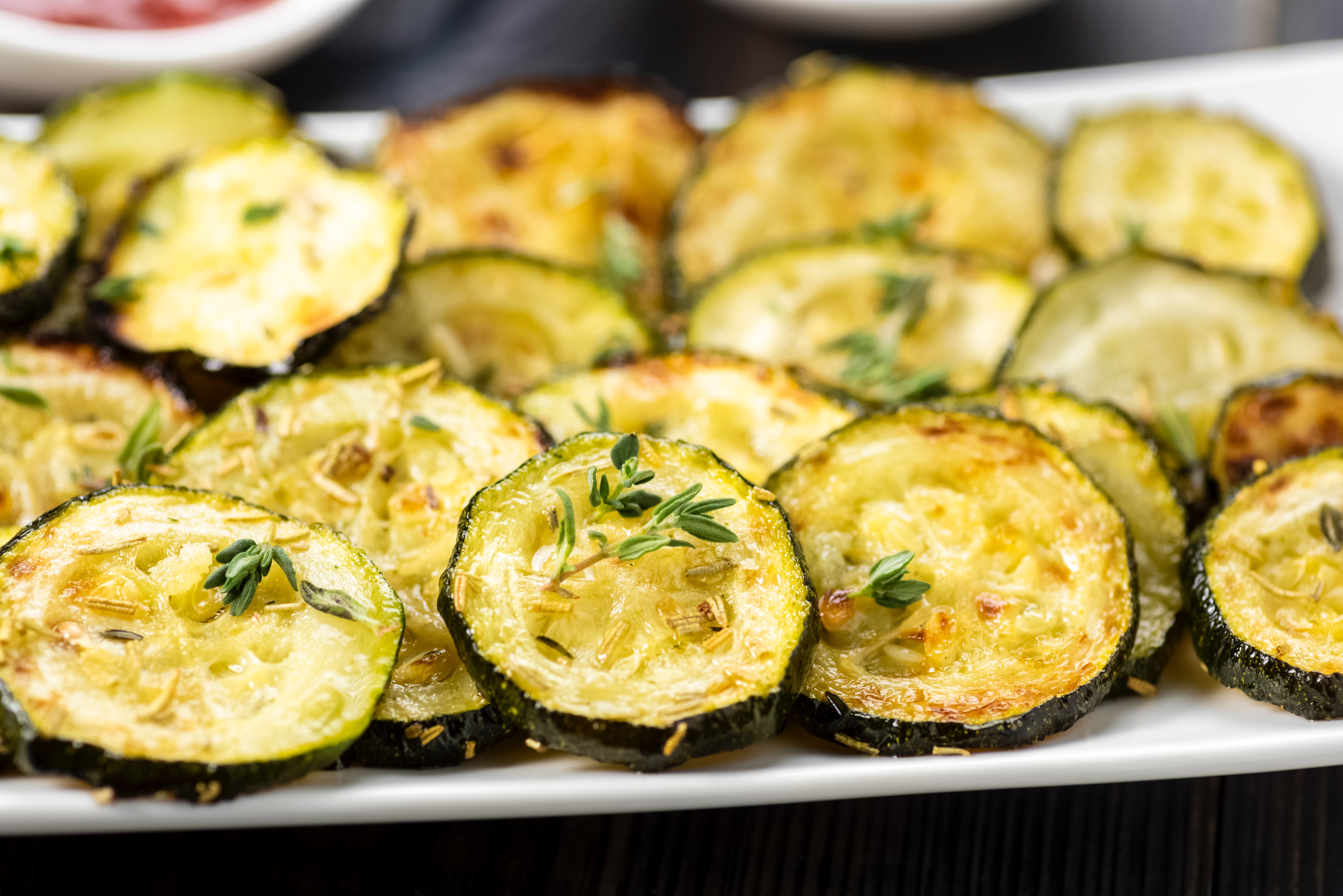

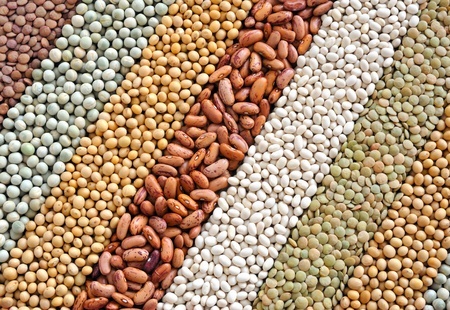
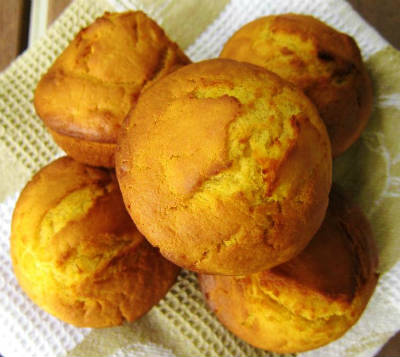

Leave A Comment